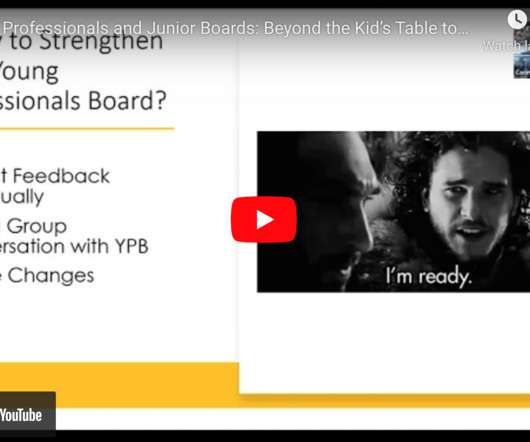NextGen philanthropists and the transfer of intergenerational wealth
ASU Lodestar Center
OCTOBER 11, 2013
continuing series, we invite a nonprofit scholar, student, or professional to. It suggests that they "will face immense, complex social problems in their lifetimes, requiring them to be both generous and smart in their giving." posted by Patsy Kraeger, Ph.D. Welcome to Research Friday! As part of a.












Let's personalize your content